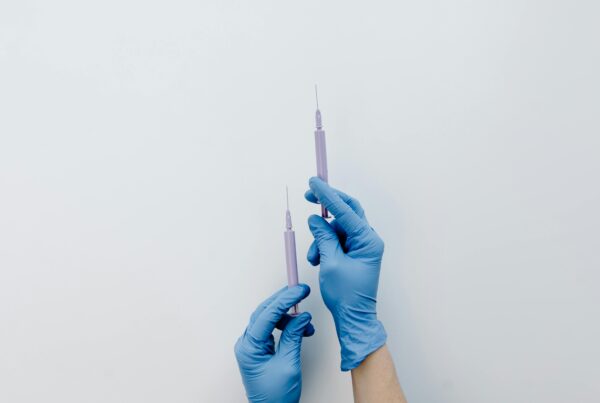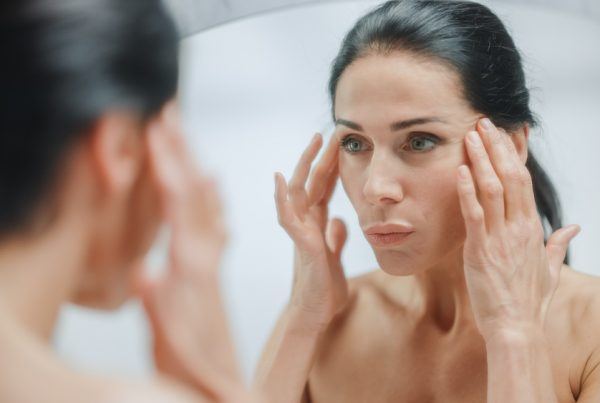I’ve had days when I hated my reflection in the mirror. Sometimes, the last thing I want to face is my face. We all have insecurities, and I’m not alone in letting them ruin my day. Now, while these insecurities may ruin my day, they’re not pushing me to plastic surgery. Unfortunately, the same can’t be said for 2.4% of the global population whose insecurities have developed into body dysmorphia disorder.
Body Dysmorphia Disorder and Plastic Surgery
It can be easy to have a narrow-minded view of what plastic surgeons, but the reality is that their expertise goes beyond cosmetic enhancements and augmentations,
“I think there is sometimes a very narrow perspective of what plastic surgeons do, and I think what gets a lot of media coverage is the cosmetic side, and not much really spoken about the reconstructive side,” explains Dr. Vaneshri Chetty-B, a renowned plastic surgeon and cosmetic provider from The Forever Institute.

Dr. Vaneshri Chetty-B
With such a profound understanding of cosmetic surgery, Dr. Chetty-B is able to offer a plastic surgeon’s perspective regarding body dysmorphia disorder,
“Body dysmorphic disorder is a mental health condition in which you can’t stop thinking about one or more perceived defects or flaws in your appearance,” explains Dr. Chetty-B. She adds that while those around you may perceive the flaws as something minor, you’re embarrassed, ashamed and anxious. These feelings may cause you to avoid social situations altogether.
“With BDD, in any one day, you’re repetitively going to the mirror, checking yourself and looking for reassurance solely related to the way you look, and the way people perceive you, and you’re continuously grooming.”
This pattern of repetitive behavior tends to take up a fair amount of time in the day. It can cause, in the medium and long term, adverse effects on your social functioning, your work functioning, your home environment, and your quality of life.,
“When you look in the mirror, you see more than a reflection – you see a story, a narrative, societal expectations, your own personal aspirations and your personal experiences.”
Identifying BDD
While body dysmorphia disorder can be categorized in the same group as other conditions like anorexia and bulimia, it is much more subtle and difficult to pick up than these conditions. Particularly because people often hide away because they understand the stigma surrounding their condition.
As a result, it typically falls on the medical practitioner to be able to adequately assess their patients and ensure that their presence in their office is more about a desire to enhance their appearance. And less about an obsession with perceived defects and flaws.,
“In my clinic, we’ve instituted a psychological assessment program that we undertake with the initial assessment for people requesting cosmetic procedures. In that consultation, we go into a fair amount of depth about their history, how many other cosmetic surgeries they’ve had, and why they want to do it,” details Dr. Chetty-B.
A history of dysmorphia
Dr. Chetty-B further elaborates that delving into a patient’s history will provide an indication of their functioning in society, in their home environment, in their work environment. Whether this has started to deteriorate because they’re so consumed with the way they look, and the way people perceive them.,
“For instance, we’ve had new parents struggling to lose baby weight two years after giving birth. They become so obsessed with losing this weight that they soon reach a point where it’s just pure frustration. This starts to take its toll, and you find these parents no longer dedicating their time to looking after their new babies.”
With patients such as these, Dr. Chetty-B and her team flag these individuals and send them to a psychologist where they do in-depth assessments for body dysmorphia disorder,
“This is ongoing – it’s never like one session. It has to be an ongoing cognitive assessment of the person, and an analysis of why they want the surgery, which direction it should go in.”
Teenagers are a dysmorphic generation
In 2023, a Gallup survey found that 51% of U.S. teens aged 13-19 spend a minimum of four hours daily on social media, at an average of 4.8 hours every day on social media. Considering the amount of social media content that emphasizes curating the perfect image, it’s not surprising to hear that many teenagers are making their way to the plastic surgeon in an effort to emulate their favourite internet personalities,
“We’ve witnessed a rising trend of younger folk coming in for plastic surgery procedures, such as breast augmentation, rhinoplasty (nose jobs), labiaplasty, and bat ears,” unpacks Dr. Chetty-B, adding that with minimally invasive offerings growing, you do find younger and younger people yearning for Botox and fillers.
Teens Under The Knife
In such instances, Dr. Chetty-B sheds that it’s important for plastic surgeons to make an informed choice, which can be done by asking themselves what is the motivation behind it? The reasoning? What is the timing for you? Is the age right? For instance, for any cosmetic breast surgery, the breasts have to be fully developed before surgery can commence, which is usually from 18 onwards,
“If we look at something like rhinoplasty, the ideal age in a young person would be when the nose is fully developed, so that’s 15 to 16 in a female, and 16 to 17, even 18, sometimes in a male.”
In dealing with teenagers looking for cosmetic surgery, Dr. Chetty-B highlights the important role that parents and educators can play in guiding the younger generation,
“I think one of the central figures in a child’s or a teenager’s decision has to be closely associated with parental support.”
Also, many of the teenager’s wishes are influenced by them being bombarded with various images. Therefore, Dr. Chetty-B states that there has to be some kind of intervention to discuss that with the teenager and look at ways of setting expectations.
“What’s also essential is that the surgeon, the parent, and the teenager have an opportunity not only to inform themselves, but to set reasonable expectations.”
Combatting the BDD Crisis
“I think that body dysmorphia disorder is something that people are definitely starting to talk about more and more. This is especially due to the rise in the number of younger people coming forward with requests to change X, Y or Z.”
In order to raise awareness for BDD, Dr. Chetty-B proposes that medical practitioners perform more in-depth assessments when they see patients,
“There are various workshops and training sessions, although limited, that offer CPD points run by psychologists and psychiatrists. They provide all the details, including the diagnostic criteria, as well as little hints and tips,” expands Dr. Chetty-B.
Dr. Chetty-B also suggests that there should be more patient information initiatives,
“I’d like to see people and the community understand what to look out for. An example is the child being obsessively in front of the mirror for hours out of a day and not getting their schoolwork done.”
With guiding hints, Dr. Chetty-B hopes that the individual will be proactive enough to investigate more. With that, they may even potentially consult a psychologist or their local GP. In addition to looking out for behaviors related to body dysmorphia disorder, Dr. Chetty-B also hopes that as a society, we can encourage changes in health and lifestyle habits, as opposed to quick fixes.
“I would much rather see a society where teachers and parents are teaching children about positive body image. That we’re not all the same, and that beauty is profoundly different and very personal on an individual basis. We can’t all be made to fit in what a ramp model looks like, and that’s okay.”
Watch The Interview
View this post on Instagram
References
Al Shuhayb, B. S., Bukhamsin, S., Albaqshi, A. A., & Omer Mohamed, F. (2023). The Prevalence and Clinical Features of Body Dysmorphic Disorder Among Dermatology Patients in the Eastern Province of Saudi Arabia. Cureus, 15(7), e42474. https://doi.org/10.7759/cureus.42474



![women [longevity live]](https://longevitylive.com/wp-content/uploads/2020/01/photo-of-women-walking-down-the-street-1116984-100x100.jpg)










